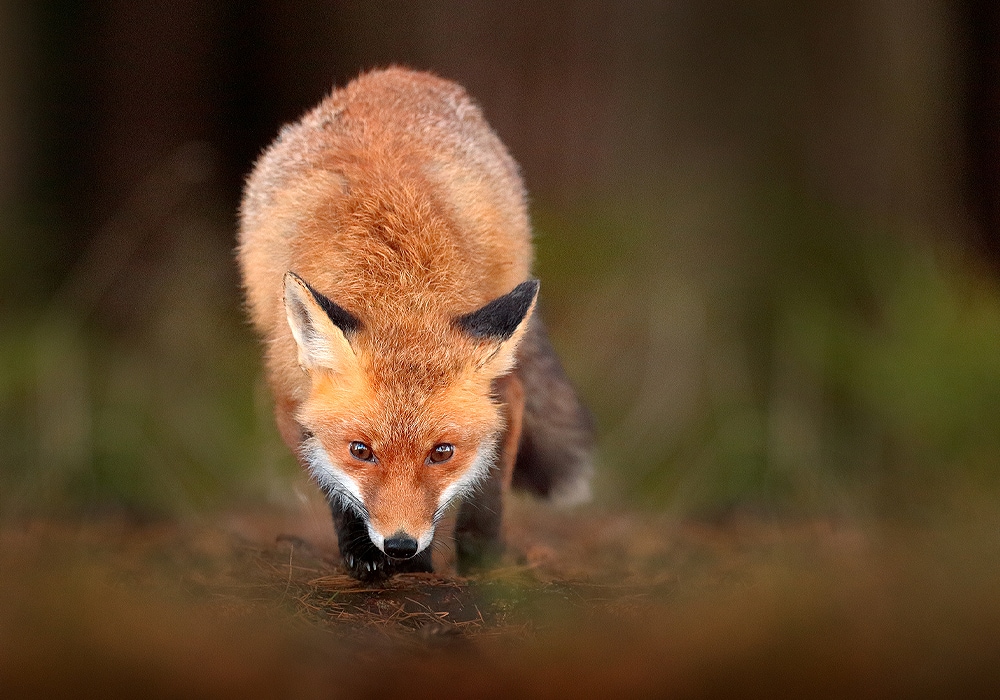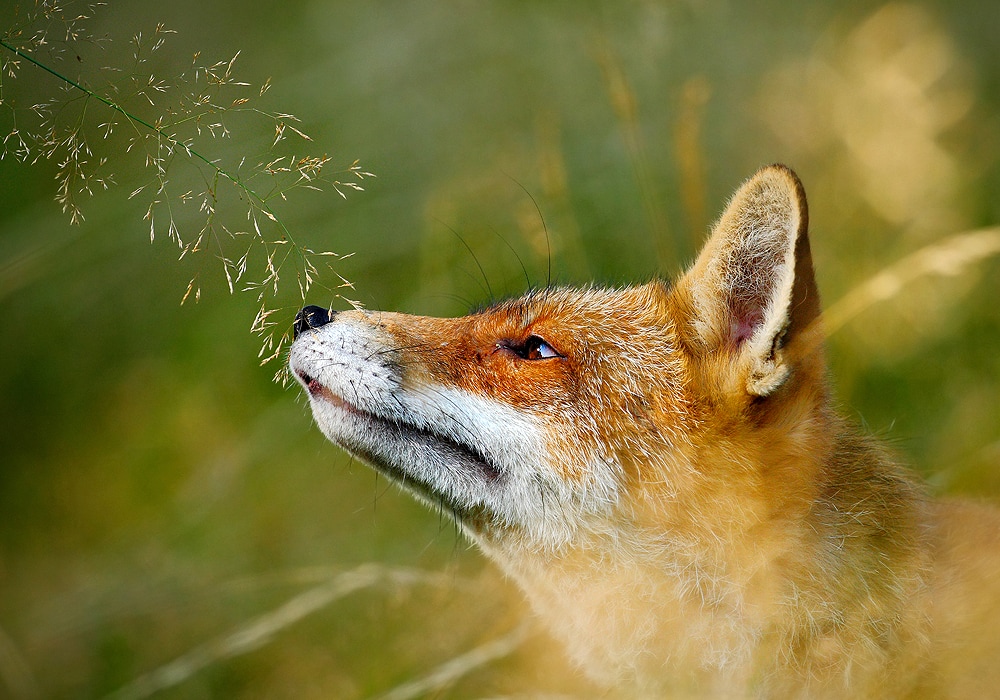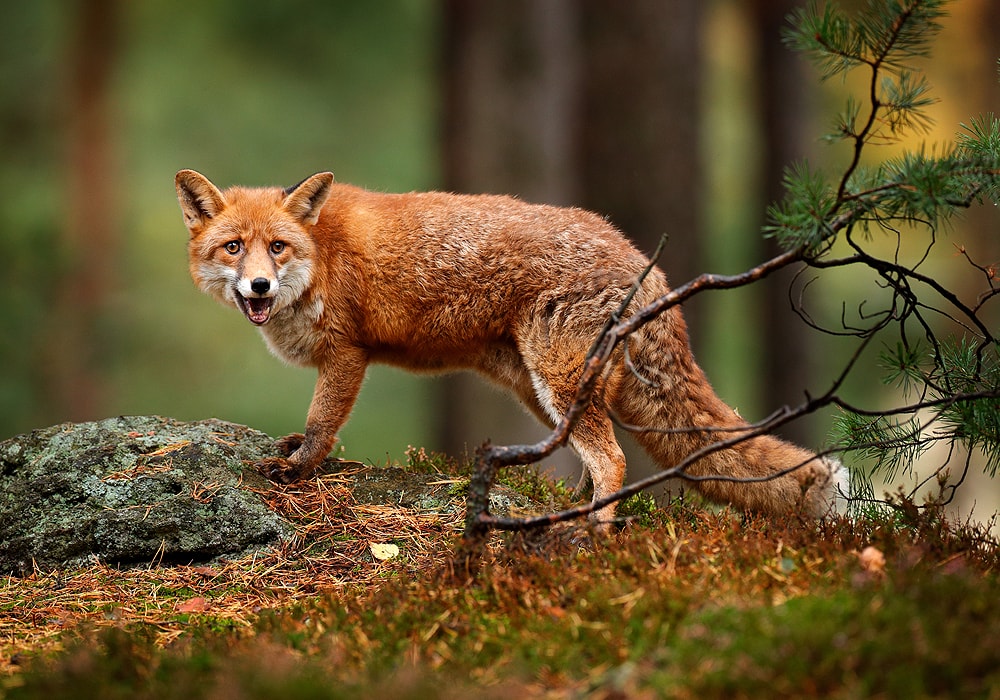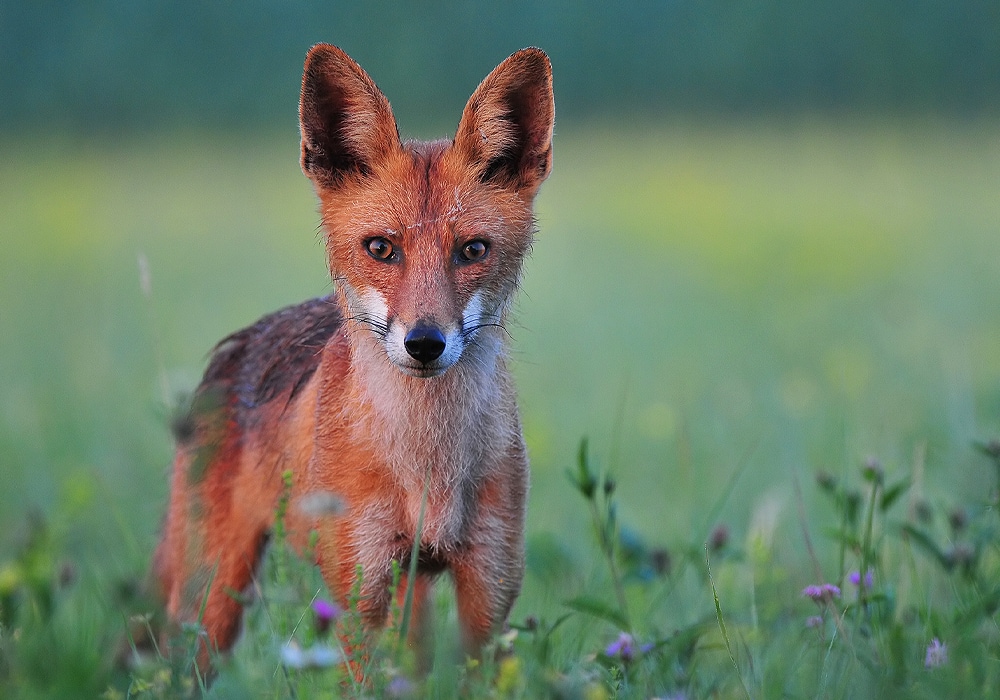Often regarded as sly and clever trickster spirits, the fox is a creature which features heavily in the myths, legends, and storytelling traditions of cultures around the globe. Found on every continent except Antarctica, the fox has lived alongside mankind since the dawn of civilization and continues to inspire the human imagination to this day.
Whether you enjoy the myths and tales of enigmatic trickster foxes, or whether you feel drawn to the mysterious charm of these alluring canines, or whether you simply appreciate the wild beauty of the fox, read on to learn more about the symbolism of foxes!
Table of contents
Fox Symbolism and meaning
Foxes are typically seen as cunning, mysterious tricksters which are often connected with the supernatural in folklore.
The tradition of foxhunting dates as far back as the fifteenth century and is responsible for many artistic and cultural impressions of the fox, especially in Europe and the United States. Traditionally, a fox hunt involves chasing a fox with a pack of scent hounds. In most cases the fox is slain by the pack of hounds with the hunters retrieving parts of the hide for its fur. To many modern audiences, this tradition seems unnecessarily cruel. It is nevertheless a part of the cultural identity of the fox. Phrases like “a fox on the run” refer to the frantic pursuit of these beset mammals. So, foxes might symbolize escape, fear, persecution, or the hunt itself. (1)
On a similar note, a “foxhole” is a pit dug out by soldiers to avoid enemy fire. Being “down a foxhole” or “in a foxhole” is often understood to mean that a person is trapped, pinned down, and in a jam. The phrase “there are no atheists in foxholes” means that when people are cornered and afraid they appeal to higher powers which they might not normally even acknowledge. So, a fox can symbolize being cornered, trapped, or in trouble. (2)

To call someone “foxy” or a “stone cold fox” means that the individual is sexually attractive. A “silver fox” refers to an older person who continues to draw admiring glances. Thus, a fox might symbolize sex appeal. (3)
A “fox in the henhouse” is often used to refer to a dangerous person who preys on the defenseless and around whom it is unwise to let down one’s guard. This is just one aspect of the negative connotations that foxes hold in agricultural contexts because of their cleverness and determination to steal livestock.
Foxes, however, do have plenty of positive meanings too. The red fur of the fox is associated with fire, warmth, and passion. Foxes are highly social and communicative. They form pairs which are usually monogamous and rear their pups with care. Although they often move under cover of darkness, foxes are no more evil than owls, raccoons, or other nocturnal animals. They are just a bit misunderstood sometimes. The fox can represent communication, adaptability, community, devotion, family, and carefulness. (4)
Fox Native American Symbolism
The fox plays many different roles in Native American myths based upon the tribe and region. In some areas, the fox is a benevolent and beloved spirit who is credited with creating the earth and guiding mankind. In other regions, foxes generally fill the same role as the coyote, the role of the cunning trickster who serves his own interests and acts on his whims with little regard for others. (5)
In Cree mythology, the fox is a benevolent and wise spirit who takes the form of an old woman to assist people in need. In one myth, a young hero is fleeing from his jealous father who intends to kill him with a number of magical attacks. The fox woman subjects the young hero to some tests and helps him escape once he has proven his worth. When his father sets hunting dogs on the boy, the fox woman gives him an ermine’s skin to distract and confuse the hunting dogs. (6)

Foxes exist in many Native traditions as clan animals which represent a family or clan affiliation. The fox is sometimes associated with fire and the sun as well as cunning and magic.
Fox Eastern Symbolism
In Japanese mythology, foxes are important animals whose nature associates them with magic, mystery, and power. In many stories, fox spirits or “kitsune” appear as shapeshifters. Kitsune are considered to have incredible intelligence and the ability to take human form whenever they please. In myths, the kitsune often appears to punish the greedy, boastful, and wicked. Kitsune use illusions or fire, monsters, and magic to trick those who deserve punishment. Often kitsune tricks result in embarrassment and humiliation for the victim. (7)

In addition, the Shinto god Inari is often associated with foxes. Inari is the god of rice and the protector of rice cultivation. While this may seem minor, consider Inari to be a major harvest deity who protects the food that the people rely on for sustenance. Also associated with merchants, swordsmiths and swordsmen, and entertainment, Inari is a very important benevolent figure in Shinto belief systems. Foxes are often depicted as guardians of Inari’s shrines, as messengers of this god, or as servants who act out Inari’s will. Statues of foxes are quite often found around shrines dedicated to Inari. Because of this deity, the fox is associated with benevolence, prosperity, and fortune. (8)
Fox Christianity Symbolism
In Christian symbolism, the fox usually takes on a more negative connotation, likely as a result of its reputation as an agricultural pest.
From Luke 13:31-33:
“At that time some Pharisees came to Jesus and said to him, “Leave this place and go somewhere else. Herod wants to kill you.” He replied, “Go tell that fox, ‘I will keep on driving out demons and healing people today and tomorrow, and on the third day I will reach my goal.’ In any case, I must press on today and tomorrow and the next day—for surely no prophet can die outside Jerusalem!” (9)
In this passage the negative reputation of the fox is obvious. Herod, the enemy of Jesus Christ, is referred to as a fox and is thus portrayed as conniving and villainous.

In Judges 15:3-5 Sampson uses a group of foxes to punish the Philistines:
“Samson said to them, “This time I have a right to get even with the Philistines; I will really harm them.” So he went out and caught three hundred foxes and tied them tail to tail in pairs. He then fastened a torch to every pair of tails, lit the torches and let the foxes loose in the standing grain of the Philistines. He burned up the shocks and standing grain, together with the vineyards and olive groves.” (10)
While this passage is somewhat graphic, it does demonstrate further the destructive connotation attached to foxes, though the foxes are hardly “at fault” in this case.
Matthew 8:20:
“Jesus replied, “Foxes have dens and birds have nests, but the Son of Man has no place to lay his head.””(11)
While this last passage may be more brief than the previous two, I think it is the most useful in terms of understanding how a Christian ought to regard foxes. Jesus refers to foxes in their dens and birds in their nests as creatures in their rightful place. In agricultural settings, foxes can definitely be pests. Christianity, however, does preach appreciation for all of nature as God’s creation. The peacefulness of the fox in its den is an idyllic image which demonstrates the beauty of nature in balance.
Fox Celtic Symbolism
The fox is important in Irish culture thanks to its connection with Saint Brigid, the patroness saint of Ireland who founded Ireland’s first nunnery. Brigid is credited with performing lots of miracles, including restoring sight to the blind. Her many pious traits often contribute to her association with animals. Because she was so gentle, it is said that many animals loved her. According to one legend, a young workman was to be put to death because he had accidentally slain the beloved tamed pet fox of the king of Leinster. Though Brigid did love animals, she did not want this workman to be slain over a mistake. Intending to reason with the king, Brigid set out for Leinster on a path through some woods. As she walked she saw a small fox slinking through the thickets. Inspired, Brigid beckoned to the fox which was instantly charmed by her and began to follow and obey her. When Brigid arrived at the king’s court, the king was incensed and would not listen to reason. His pet fox was dearly loved and could perform a number of impressive tricks on command. Fearing for the workman’s life, Brigid commanded her new fox companion to perform the dead fox’s tricks. Delighted, the king began playing with this new fox. Brigid offered to let him keep the fox in exchange for the workman’s freedom. The king agreed, but eventually lost interest in his new pet. It is said that when nobody was paying attention, the fox escaped the castle and journeyed out to find Brigid again. (12)

Another Celtic myth suggests a connection between foxes and Vikings. Some old wives’ tales from Ireland insist that foxes did not exist on the island until the first Viking raiders arrived. The Vikings, allegedly, brought the foxes with them as hunting hounds. This is not very likely, for a number of reasons, but it is an interesting bit of Irish fox lore!
Fox African Symbolism
In West African mythology, the fox represents disorder, loneliness, cunning, and foresight. This is due to the mythological figure of Pale Fox which belongs to Dogon mythology. According to Dogon mythology, the creator god, Amma, made the Earth Mother from clay and then copulated with her to produce several sets of twins. One set, the Nommo, consisted of a male humanoid and female humanoid with green hair and snake-like bodies. The Nommo were water spirits. Next, the Earth Mother gave birth to the “Pale Fox.” Pale Fox was born early and without his twin sister. Without a female counterpart, Pale Fox was devoid of balance and capable of upsetting the balance of the world. (13)

Pale Fox is said to be a trickster who often behaves disruptively due to a lack of balance between male and female energies. Pale Fox is a lonely being who roams the earth searching for his female counterpart whom he cannot ever locate. While most Pale Fox myths paint him as a manipulative and mischievous trickster, he is also very respected. Some rituals involving Pale Fox are thought to predict a person’s fate.
Fox in Dreams
Dreaming of a fox can indicate longing. Like foxhunters, who often spend long hours chasing the elusive animals to no avail, the fox can appear to us in dreams as a sign of a goal, ambition, or desire that continues to elude us. Dreaming of a fox may be a sign to change your approach. Try chasing your dreams with a bit more subtlety, you may even benefit from ignoring your goal for a while and focusing on the present. Often, good news finds us when we relax our energy a bit.

A fox in a dream may also represent confusion or uncertainty. Foxes are often associated with the mysterious and arcane. Dreaming of one can mean that you are struggling to grasp something or that another person’s actions are confusing you.
A fox dream can also indicate freedom, and the desire for it. All over the world, foxes are connected with wild spaces and the fauna that inhabit these wildernesses. Dreaming of one can mean that you feel trapped by mundanity or routine and might benefit from some spontaneity.
Fox Encounters and Omens
A lot of superstitions revolve around encounters with a fox, unfortunately most superstitions consider the fox to be bad luck or an ill omen. This is mostly because, in agricultural settings, foxes can be a bad sign. On farms, foxes lurk around because they intend to make off with some livestock. So, for a farmer, a fox encounter can mean trouble afoot.

In some cases, a fox encounter can be a warning that someone untrustworthy is near. The proverbial “fox in the henhouse” conceals their true intentions to take advantage of the naivete of others. If you encounter a fox, examine whether those around you truly deserve your trust.
Fox Mythology and Folklore
Most fox myths feature this animal as a cunning trickster spirit or as an ambassador of the wilderness.
In Aesop’s Fables, the fox often appears as a mischievous character who receives a comeuppance for tormenting other animals. In “The Fox and the Crane,” for example, the fox plays a trick on the crane by inviting the bird over for dinner and serving soup in a very shallow dish. Because of the crane’s long beak, the fox can lap up the soup but the crane cannot scoop it into its mouth. The fox thought his trick was funny, but the crane was gracious and invited the fox to join him for dinner the next day. When the fox arrived at the crane’s home the next day, the table was set with delicious food all contained within a large bottle with a long narrow neck. The crane could dip his beak into the bottle to eat, but the fox could only lick the outside. (14)

Fox Spirit Animal
If the fox is your spirit animal then you are likely a shy and reserved person who enjoys their privacy. Though shy, the fox spirit animal does form deep relationships with a select few whom it trusts.
People with the fox as their spirit animal may be misunderstood and thought of as rude, shifty, or withdrawn, simply because they like to keep to themselves. Don’t be discouraged, though! The people who judge you for your shyness are not the people whose company you would enjoy.
The fox spirit often resides in people who are ambitious and strategic. Passionate and prone to dreaming big, the fox spirit sets goals and works tirelessly to achieve them. People with the fox spirit animal may find themselves to be obsessed with obtaining the future that they desire for themselves.
People with the fox spirit animal are artistic, but may express themselves in unconventional ways. This is all part of the fox spirit’s unique way of viewing and interacting with the world. The fox spirit animal sees hidden meanings that others do not and seeks to draw connections between patterns that other people don’t even notice.
Because the fox is often overlooked and found in shadowy places, people with the fox spirit animal are observant and enjoy learning to read the emotions and motivations of others. People-watching is a favorite pastime for the fox spirit.
Fox Totem Animal
The fox totem animal is associated with dreams and premonitions. If your totem animal is the fox then you may be slightly more tuned in to the flow of time and the subconscious than most people.
People with the fox totem tend to have intense dreams that are filled with imagery and symbols. This is because the fox totem is both very open-minded and very introspective. Fox totem dreams might be confusing, but they allow unique insights into the psyche if explored properly.

The fox totem animal is often found in people who experience “deja vu” often and may feel disconnected with the forward march of time. While not every uncanny sensation constitutes a vision of the future, experiencing premonitions can be a very potent and moving sensation. The fox totem is all about heightened senses which help you to choose paths that are safe and fruitful.
Fox Power Animal
The fox power animal is associated with illusion. People with the fox as their power animal are skilled liars who may use their abilities for good or evil. When lying persuasively, the fox power animal easily manipulates the trust of others.

This manipulation can easily be used to harm people, however in many settings it can also be a gift. Soothing a hurting friend by convincing them that tomorrow will be a better day, for example, is one talent that the fox power animal may bestow.
Illusion can also be an incredible tool when it comes to visualization and storytelling. The fox power animal is great at crafting images for itself and others. This allows the fox to stay focused and work towards accomplishing its goals. This imagery also gives the fox a unique ability to captivate the imaginations of others and tell compelling stories.
Fox Tattoo Meaning
From femininity to secrets to magic, the fox symbolizes so many things that a fox tattoo can mean almost anything. The style, cultural context, and individual imagery of a fox tattoo may also influence its meaning.
Here is what some general varieties of the fox tattoos stand for:
- Brown fox tattoo- symbolizes adaptability and invisibility
- Black fox tattoo- symbolizes both good luck and also oppressiveness
- Red fox tattoo- embodies balance and inner strength
- White fox tattoo- represents persistence, stealth, and cunning

A tattoo of a fox in a Japanese style may represent either the “kitsune” spirit or the servants of the god Inari. In either case, the fox tattoo might represent protection and guardianship. In the case of the kitsune, a fox tattoo can mean justice, illusion, mystery, or benevolence.
A Celtic themed fox tattoo may refer to Saint Brigid’s tamed fox. Such a tattoo could represent Ireland itself, gentleness, feminine virtue, devotion, or selflessness.
A fox tattoo which features a running fox might represent the foxhunt. This tattoo could indicate a person who feels set upon or persecuted by the world.
Conclusion
Foxes are complex animals whose history with humans has often been adversarial. Despite this, human cultures are captivated by this stunning animal and often attribute supernatural qualities to the fox. Whether the fox is your spirit animal or whether you feel drawn to the enigmatic folktale identity of this elusive animal, the fox is nonetheless a creature which inspires the human imagination.
Related:
